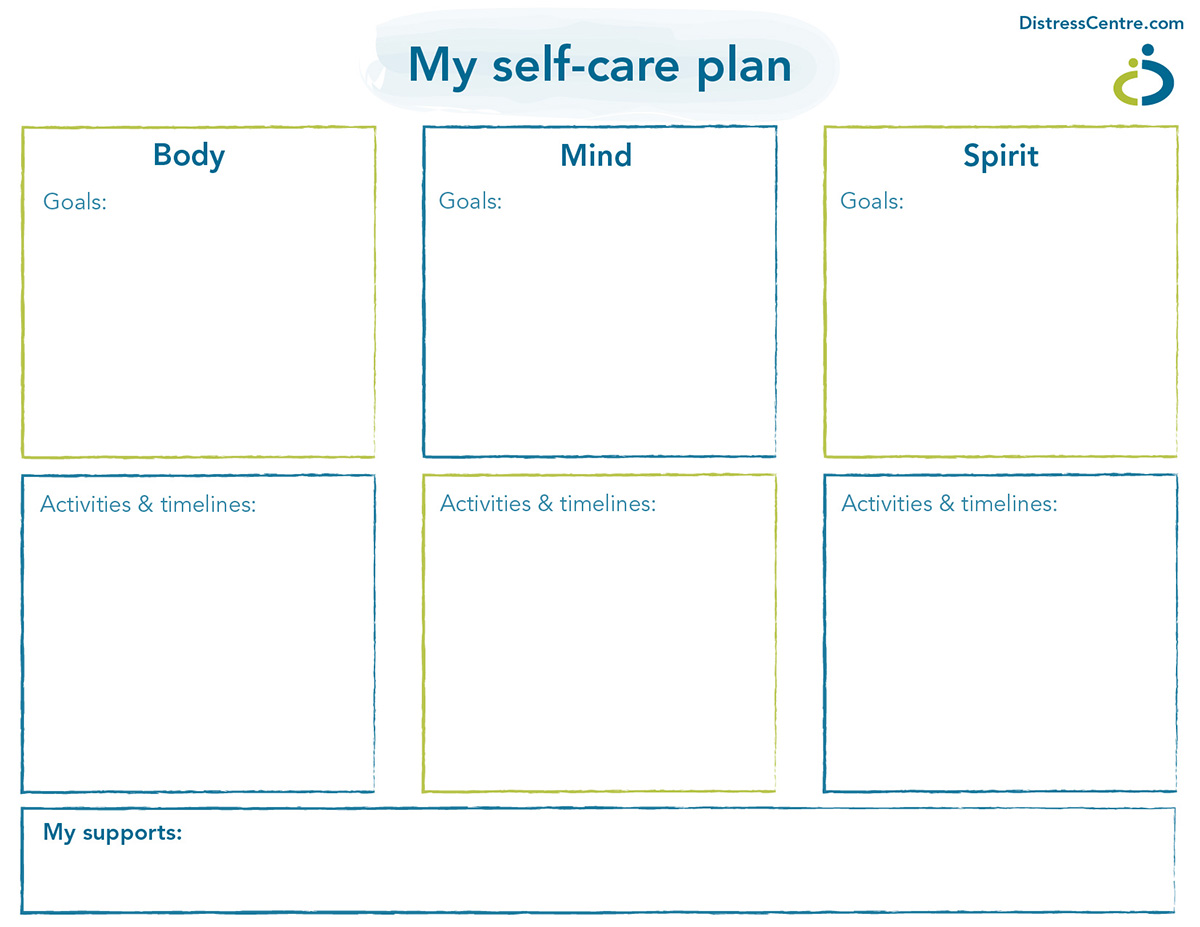For many of us, the last few years have been difficult. A strong self-care practice is an important piece in maintaining your mental health. Here are some ideas on creating your own personalized self-care plan.
What is self-care?
Self-care is any activity that we intentionally do in order to take care of our physical, mental and emotional health. Practicing self-care can help you avoid burn out, improve your mood and reduce anxiety. By taking care of yourself, you’re able to be there for others when they need you.
Self-care goes hand-in-hand with developing a community of care. Both contribute to the health and wellbeing of individuals and society as a whole and both allow people to have increased capacity to support others.
In this article, we are focusing on helping you create your own personalized self-care plan.
Step 1: Set up the structure
Start with an open text document. Develop the high-level structure for your plan, under categories that appeal to you, such as:
- Mind
- Body
- Spirit
Or:
- Physical
- Mental
- Emotional
- Spiritual
These categories should feel meaningful to you. You may want to create a separate section for a professional self-care plan or include professional self-care within your overall plan.
Step 2: Setting goals
You can start with setting some high-level goals under the categories you have identified.
Here are a few examples of goals:
- Creating an exercise habit (under Body)
- Establishing a work/life balance (under Spirit)
- Spending meaningful time with my family (under Spirit)
- Making time to relax and unwind (under Mind or Spirit)
Step 3: Fill in the details
Now that you have a few goals, it’s time to fill in the details and personalize your self-care plan.
Activities
Look at a goal and think about the kind of activities you like to do to achieve them. For example, if your goal is to spend more time outside, you could put down “outdoor walks” or “reading on the balcony” as activities. Further detail within the goal can help you achieve it, so you could expand your goal to be: “Spend at least 20 minutes outside four days a week.” Your action plan to help you achieve this could be “On Monday schedule in 20 minutes of outside time four days a week.”
Your activities should address what you need, not necessarily what you want. For example, staying up until 3am watching Netflix to take your mind off your troubles may feel like a self-care activity, but when you’re exhausted the next day you realize getting some rest is what your body really needed.
As you get more comfortable in practicing self-care, it will become evident what’s best for you, not what’s more fun or easy.
Remember: Self-care is also about what you don’t do. What are you currently doing that isn’t making you happy? What boundaries do you need to establish in your life?
Timelines and support
You can include short term and long-term goals. A short-term goal could be reading before bed four nights a week. A long-term goal could be reading one book a month for the year.
All this detail may feel overwhelming for you, which is okay. Self-care is a commitment and taking baby steps towards your goals will help you achieve them.
Identify the support you need from the people around you to achieve your self-care goals. If your goal is to be more social, choose a friend to schedule a weekly phone call with. You could also make a list of the friends, coworkers and family members you go to after a hard day at home or work. Distress Centre is available when you need to talk. Contact us by phone, text or online chat.
Tip: Discussing your plan with a counsellor or trusted friend may help you confirm the self-care goals and activities that are best for you.
Step 3: Get creative
This step is optional but encouraged! This helps to further personalize your plan and establish it as uniquely yours. If you enjoy getting creative, you could design a plan using software like Adobe Photoshop, Paint or Microsoft PowerPoint. You could pull out some paints or pencil crayons to create your plan. Even doing something small like changing the font type or colours you like in a text document can add a personal touch.
Step 4: Revisit your plan and update regularly
Your plan is a living document so feel free to make changes if you’re not meeting your goals or if you aren’t feeling motivated to continue.
For example, you may have set a goal to complete high intensity workouts, but you aren’t enjoying them, so you procrastinate or skip the workout. Then you feel bad for not following your plan. You don’t want to take exercise out of your plan altogether because you feel good when you exercise, so this is the time to make some positive changes.
Step 5: Go easy on yourself
Sometimes life doesn’t go as planned so your self-care plan should be adaptable and help you get through the tough times. Your plan should not add to your stress. When you’re feeling down, ask yourself what small thing can you do to feel better? A twenty-minute walk might be off the table so maybe you just step outside for a few minutes and take a few deep breaths and stretch.
Template
Your self-care plan is yours, so design it as you wish! Here is a template that hopefully inspire you and helps you get started:

- Print template
- JPG template (use with design software – Canva is free!)
Good luck and have fun!
